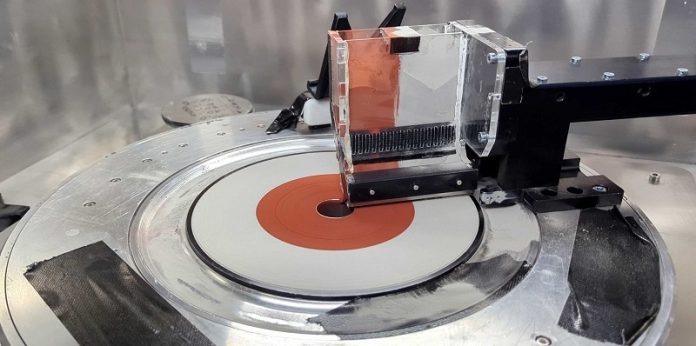
Rocket engines today already rely heavily on 3D printing to squeeze out the best performance. But a group of students at ETH Zurich may have just taken this technology to the next level.
They have created a brand-new 3D printing machine that can build metal parts faster, cheaper, and even from more than one metal at a time.
The invention is a special type of laser powder bed fusion (LPBF) printer. Traditional LPBF machines move in straight lines, laying down a thin layer of powder, then melting it with a laser before moving on to the next layer.
This stop-and-go approach makes production slow. The new ETH machine works differently: it uses a rotating platform and a circular tool path. While the part spins, powder is deposited and melted continuously.
That means the process never has to pause, cutting manufacturing times for round parts by more than two-thirds.
Why does this matter? Rocket nozzles, turbines, and many other aerospace parts are usually round, thin-walled, and made from multiple materials.
For example, the inner wall of a rocket nozzle may be copper, which quickly conducts away heat, while the outer wall is a nickel alloy that can handle extreme temperatures.
Up to now, making such complex parts has been expensive and out of reach for small research teams. The new machine changes that by allowing two metals to be printed together in one continuous step.
The project, called RAPTURE, was carried out by six bachelor’s students in their fifth and sixth semesters. Guided by Professor Markus Bambach and senior scientist Michael Tucker, they designed, built, and tested the printer in just nine months at ETH’s Advanced Manufacturing Lab.
Tucker explains that the project started as part of a challenge to support ARIS—the Swiss Academic Space Initiative, which builds student rockets aiming to reach space.
For ARIS, lightweight, multi-metal nozzles are essential if they want to cross the Kármán Line, the official boundary of space at 100 kilometers altitude.
One of the biggest hurdles was figuring out how to synchronize the rotating laser with the moving gas and powder nozzles. The machine also had to prevent oxidation by constantly blowing inert gas over the printing area.
In addition, the students designed custom parts—such as a rotatable gas inlet and an automatic powder refill system—because these components did not exist on the market.
Despite the challenges, the finished printer looks surprisingly close to something you would expect from industry, not just a student project.
The technology offers another big advantage: reduced waste. In conventional systems, large amounts of metal powder are left over, especially when multiple materials are involved. Separating the powders is difficult, so much of it goes unused.
The ETH machine avoids this problem by applying powder only where it is needed.
Although the prototype so far has printed parts up to 20 centimeters in diameter, the team is now working on scaling it up for larger and faster production.
They have already filed a patent and the invention has been nominated for ETH’s Spark Award, which honors outstanding innovations. Beyond rockets, the technology could find uses in aircraft, gas turbines, and even electric motors, where circular shapes are common.
For Tucker, the most exciting part is that a group of students managed to design and build a working machine with real industrial potential in less than a year.
It’s not just an academic exercise—it could reshape how critical aerospace parts are made in the future.



